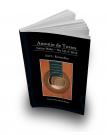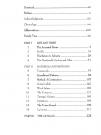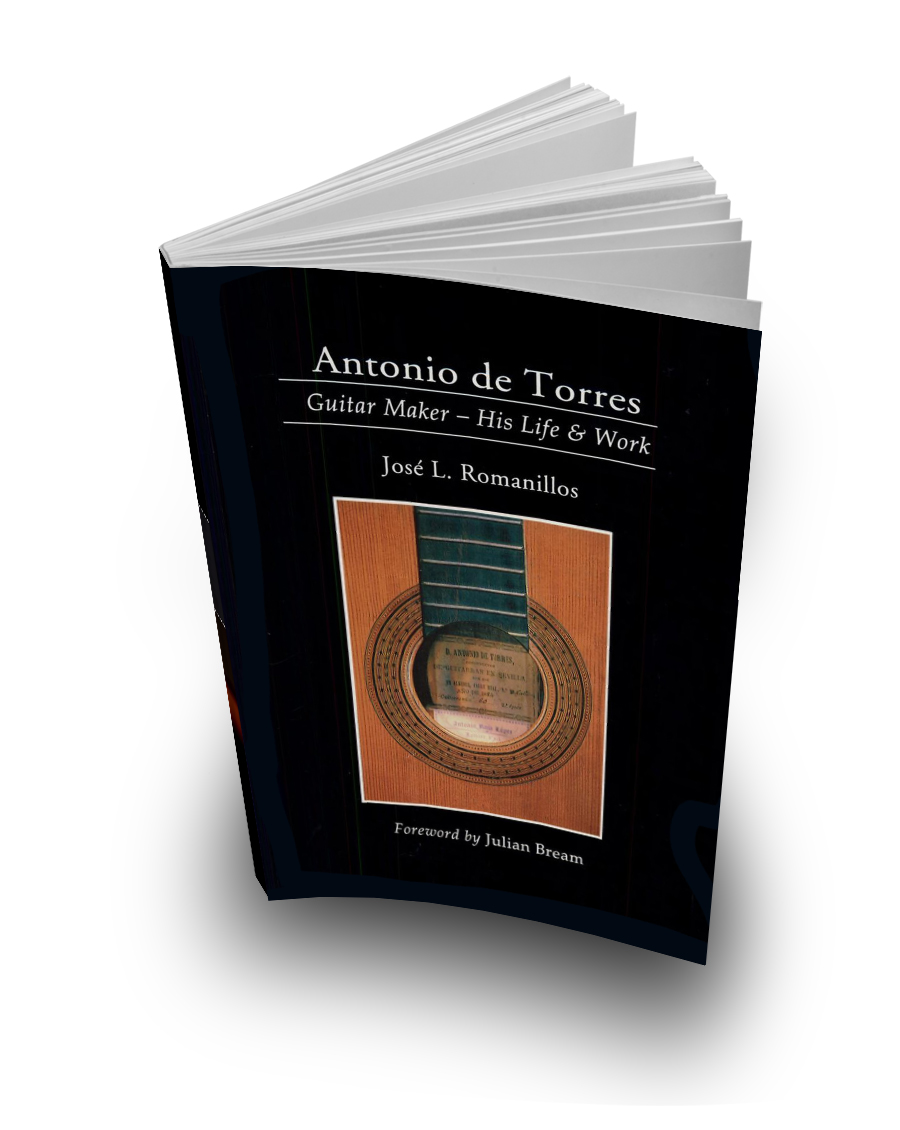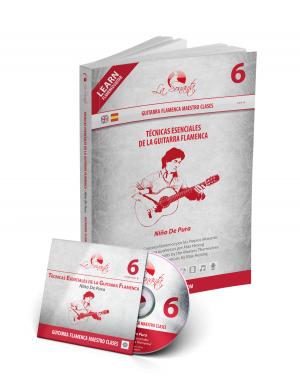It was the legendary Spanish guitar maker Antonio Torres (1817–1892) of Seville, at the end of the 19th century, that succeeded in making the guitar required to accompany flamenco singing and dance, giving the guitar its definitive form. Most of Antonio Torres his guitars were cheap flamenco guitars, the ones made from cypress wood instead of from the precious woods from Latin America. Local Gypsies could only afford these cheap guitars to play flamenco. In time they were adapted to small variations and eventually identified as flamenco guitars. Antonio Torres increased the body size and the width of the neck, he increased the scale length, he introduced the seven fan braces instead of three to make a thinner soundboard and improved internal bracing. His guitars were now suitable for concerts; the volume was not too weak anymore to play along with the loud percussive footwork of the dancers and the powerful vocals of the singers. Often it is thought that the flamenco guitar is to be a derivative of the classical Spanish guitar. This is incorrect since the classical guitar as well as the flamenco guitar have been developed, around the same time but separately, from their 19th century predecessors. Strangely enough, the founder of both the flamenco and classical guitar was the same luthier, Antonio de Torres from Seville. A very interesting and striking article, Cultural Origins of the Modern Guitar in the Soundboard magazine edition fall 1997, Richard Bruné stipulates that the modern flamenco guitar is closer to the 19th century guitar of Antonio Torres than the current classical guitars. In this article Richard Bruné indicates that the modern classical guitar is derived from an earlier flamenco type instrument. This guitar founding period at the end of the 19th century is also characterized by Tarrega (1852 -1909) his pioneering playing techniques used by guitarists. Today Juan Miguel Gonzalez Morales, born in Almeria January 17 1947, is the last legacy of Antonio de Torres.
Bladmuziek
- Beschrijving
- Kenmerken
- Combineer met
- Levering
- Veilig betalen
- 352 pages
- Paperback A4 size
€ 65.95
De 6e editie in de flamenco master serie om de technieken en de speelwijze van de veelgeprezen en met prijzen overladen flamenco gitarist, Niño De Pura, te leren.
Startend met de basis, laat Niño De Pura je zien hoe je problemen van houding, vingerposities en picado-coördinaties kan aanpakken. Op basis van zeer gedetailleerde oefeningen, toont Niño De Pura je zijn duidelijke en zeer effectieve manier, met veel gesproken tips, om flamenco gitaartechnieken als picado, arpeggio, alzapua, rasgueos, tremolo en talloze variaties en combinaties te leren en te verbeteren. Niño De Pura toont deze technieken niet enkel afzonderlijk, maar ook in de praktijk door het spelen van volledige CD composities, die ook langzaam worden gespeeld op een gesplitst scherm met close-ups van de linker- en rechterhand en een dynamische compás. De getoonde composities bevatten zijn beroemde guajira 'Pa'Pura', de alegría 'Alegrías del Kiki' en de taranta 'Tocando el Cielo'.
Het bijhorende 199 bladzijden muziekboek bevat authentieke transcripties geschreven door Max Herzog in nauwe samenwerking met Niño De Pura in zowel standaard muzieknotatie als tabulatuur. De DVD toont...
Wij streven ernaar om je pakket binnen 1-2 werkdagen na bevestiging van je bestelling te versturen, uitgezonderd goederen die op bestelling zijn gemaakt of duidelijk gepersonaliseerd zijn, uitgezonderd uit voorraad zijnde producten. Tijdens de vakantieperiodes kunnen leveringen iets langer duren. De laagst mogelijke verzendkosten worden automatisch berekend bij het uitchecken. Je hoeft geen extra verzendkosten te betalen als je bestelling in meerdere pakketten of meerdere zendingen wordt geleverd.
Terugzending: Je hebt 14 dagen bedenktijd. Een retour kan je aanvragen door te klikken op 'My Account’ bovenaan links en vervolgens de rubriek ‘Retouren’ te selecteren. Als je niet tevreden bent, wordt je bestelling terugbetaald, verminderd met de verzendkosten, als we de producten in originele staat, gebaseerd op foto's genomen voorafgaand aan de zending, terug ontvangen hebben. De online tracking van de transportdienst zal het moment van ontvangst bij je thuis identificeren.
Aankopen in de winkel of verzegelde producten zoals dvd's, boeken en cd's, evenals aangekondigde uitverkoop, komen niet in aanmerking voor retourrecht. Als u het product wilt retourneren, moet u er begrip voor hebben dat u verantwoordelijk bent voor de verzending en de verzender. Omdat wij een kleine speciaalzaak zijn en het voor ons vrijwel onmogelijk is om het beste transportmiddel bij u in de buurt te bepalen, kunnen wij de retourzending niet organiseren en kunnen we de kosten van de retourzending niet terugbetalen. Wij raden u ten zeerste aan om altijd gebruik te maken van verzekerde verzending en uw retourzending optimaal te verzekeren tegen verlies of beschadiging tijdens transport voor de aankoopwaarde van het te retourneren product. Alle producten dienen in de originele, onbeschadigde doos en verpakking aan ons geretourneerd te worden. Als de producten tekenen van slijtage vertonen die resulteren in een waardevermindering, behouden wij ons het recht voor om de terugbetaling dienovereenkomstig te verminderen. Ga daarom zorgvuldig om met de producten of instrument(en) zolang u deze in uw bezit heeft en bespeel of gebruik ze niet nadat u ons heeft laten weten dat u het product wilt retourneren. De verantwoordelijkheid voor het product ligt bij u, de klant, totdat het product door ons is ontvangen. Speciaal bestelde producten, op maat gemaakte bestellingen of goederen die zijn vervaardigd of gewijzigd volgens klantspecificaties en waarvoor een niet-restitueerbare aanbetaling is gedaan, zijn uitgesloten van dit retourbeleid. Wij zullen ons uiterste best doen om een voor alle partijen aanvaardbare oplossing te vinden, maar er is geen garantie dat wij het betaalde bedrag voor het maatwerkproduct volledig kunnen terugbetalen.
Opdat je steeds op de hoogte bent van de actuele voorwaarden, wordt per individuele bestelling telkens gevraagd om voorafgaand akkoord te gaan met de voorwaarden.
Deze vraag van acceptatie van deze voorwaarden zal specifiek aan u worden gesteld vóór elke individuele bestelling die u op onze site plaatst.
Als u niet akkoord gaat met een van deze voorwaarden, raden wij u aan om uw bestelling niet te plaatsen en contact met ons op te nemen.
Je veiligheid en privacy ... onze prioriteit.
Je betalingen en privacy zijn volkomen veilig door de anti-fraude systemen van onze servers. Elke keer als je betaalt bij La Sonanta, wordt je kaartnummer en identiteit versleuteld en onzichtbaar opgeslagen door de bescherming van onze 3D Secure™ technologie. Je kredietkaartgegevens zijn bij niemand bekend. De La Sonanta gecodeerde en TLS geverifieerde technologie zorgt voor een uiterst veilige online shopping ervaring.
Naast beveiligde online betalingen met alle grote creditcards en betalingsmethoden, kan je ook kierzen om te betalen met bankoverschrijving voor al je online bestellingen.










